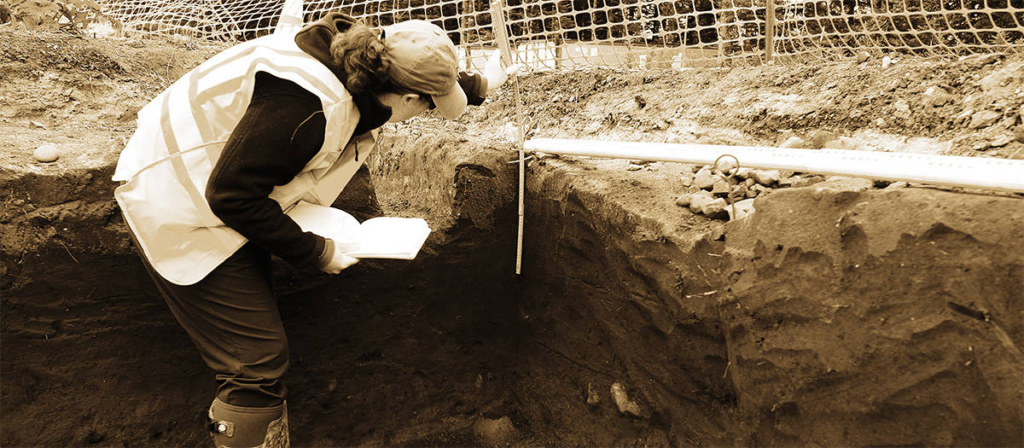While working on the Sterling Highway in 2021, contractors unearthed evidence of Dena’ina homes. The find included cache pits, animal remains, cutting tools, and a ground slate point arrowhead.
On the Chiniak Highway in Kodiak, an ancestral Alutiiq settlement approximately 350 years old was discovered. And in advance of an expansion project at Fort Wainwright, archaeologists documented campsites at McDonald Creek that range from 6,000 to 14,000 years old, including stone tools and the remains of extinct mammoths.
Because of finds like these, companies involved in excavation are encouraged, and sometimes required, to work with archaeological experts to preserve cultural resources.
“We’re not here to use bullwhips, steal artifacts, or punch Nazis,” says Gilbert Browning with a laugh. “We’re here to do right by tribes and Native groups and to keep the ball rolling with regards to development and progress and new technologies.”
As senior associate archaeologist for Stantec, Browning is the company’s cultural resources lead in the Pacific Northwest and Alaska. The global design and engineering firm began employing archaeologists in the early ‘80s to make sure its projects were environmentally compliant.
“As we progress as a nation, environmental compliance and stewardship of the natural environment is becoming an increased focus,” Browning says. “One of the boxes we check in environmental compliance is archaeology. We are part of the trend of cultural resource management and environmental compliance in the United States as a whole.”
Cultural resource management (CRM) differs slightly from archaeology in that it is more business- and client-focused. Starting in the late ‘70s, CRM became a growing trend nationwide. That gave archaeologists a new field in which to apply their training.
“Archaeology with the big ‘A’ is typically what people think about when they see Indiana Jones, but today that idea is more reserved for academia,” Browning explains. “CRM is compliance-related and has to do with Section 106 of the National Historic Preservation Act.”



